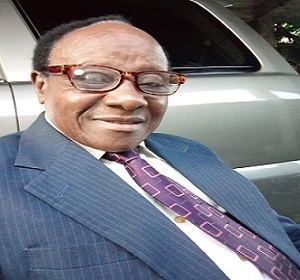
Hello! I'm
Professor
Ohiri Innocent
Author, Writer, Actor, LecturerOne Man. One Mission. Can He Go Beyond?One Man. One Mission. Can He Go Beyond?
Innocent Ohiri
The term “Stage Theatre” in this study means stage performances for the education, information and entertainment of an audience. In some peculiar cases, it means a performance, staged for a little audience, which has the sole aim of appraising the entertainment, artistic and professional levels of the performance. In this category can be found run throughs, staged for a production crew that not only enjoys the vicarious essence of the performance but also assesses its qualification for presentation to a larger audience. The term “stage oriented” means the possession of stage training, orientation or background. This work examines the challenges of directors, designed and producers with this background as they join media theatre.
On the other hand, “Media Theatre” is used in this work to mean “a recorded theatre” meant for the entertainment of a media audience. It can, in other words mean “a recorded stage theatre”. This is relevant in the sense that the performances are perfected on a stage, which could be of either an arena, proscenium or thrust configuration, before the recording with a camera and a microphone. For purposes of clarity and sharp focus, it is imperative to state, abinitio, that out of the three types of media -private (or personal), print and electronic - this study focuses on the electronic media with emphasis on the television media which was the last, out of the three types of electronic media, to arrive. The reasons, for the choice of the television media are predicated on the fact that it enhances understanding through the use of both audio and video signals, an advantage it has over radio communication which involves the transmission of only audio signals or messages. They are also predicated on the fact that, unlike film, which was the first type of electronic media to arrive, it has made a bigger and more lasting global impact in the area of mass communication.
Television media, which can be succinctly called television theatre has, in recent times, attempted to “overshadow” the stage theatre which had an earlier beginning. Most stage directors, designers, and producers have consequently “crisscrossed’ into television theatre for one reason or the other. Many have gone into the much younger, but more lucrative, home video industry to make more money. This “carpet-crossing” has met with so many challenges which emanate as a result of the stage orientation of these practitioners. It has become quite desirable to examine these challenges that television theatre poses on these stage-orientated practitioners. This
study attempts this appraisal chronologically and with respect to the different stages of a media theatre production. It is hoped that this appraisal will reveal the true nature, characteristics and nuances of both types of theatre. It will also reveal the similarities and “desimilarities” of these theatres.
A media theatre production has the following stages: